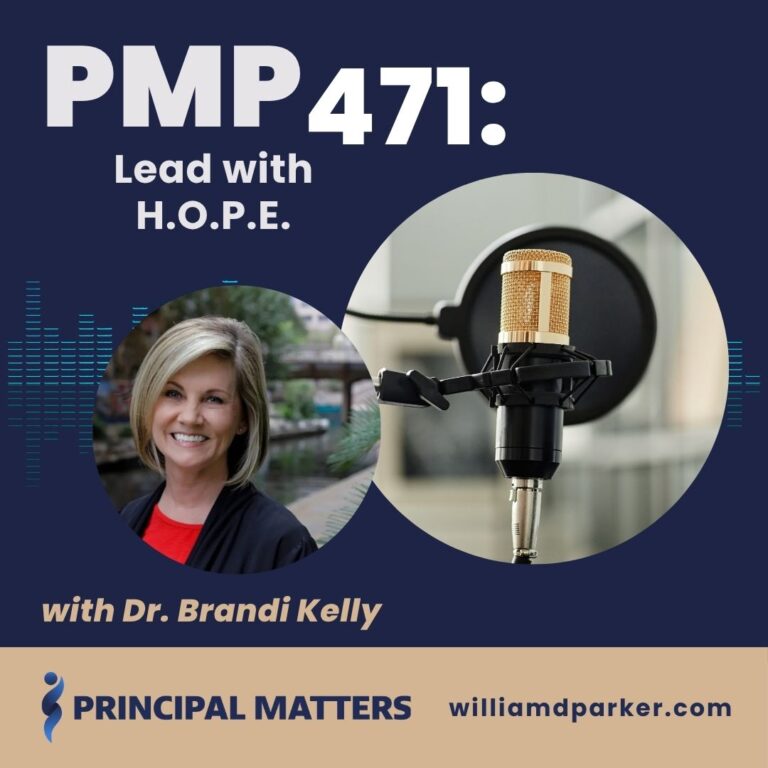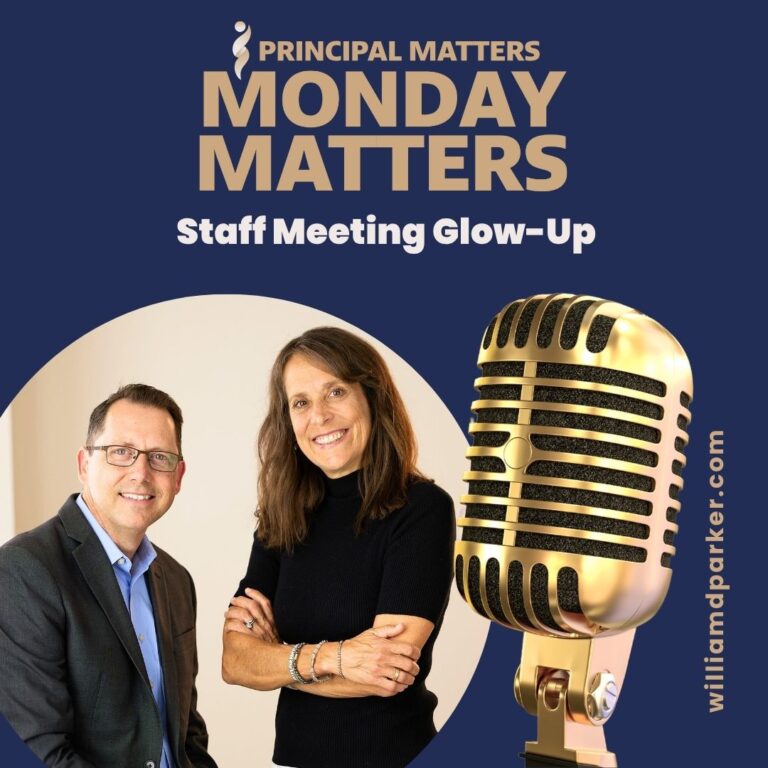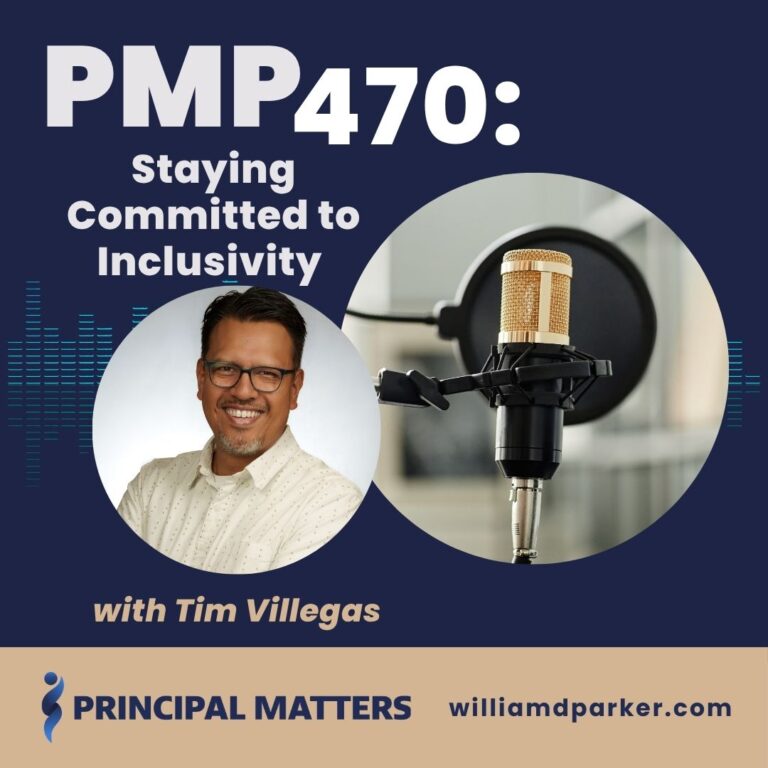Podcast: Play in new window | Download
In the book David and Goliath (Underdogs, Misfits, and the Art of Battling Giants) by Malcolm Gladwell, the author presents two ideas in the introduction of his book.

First, he says that much of what we consider valuable in our world arises out of ‘lop-sided’ conflicts – the act of facing overwhelming odds creates moments of greatness and beauty. Second, he says that we consistently get these conflicts wrong. We mis-read them. “Giants are not what we think they are” (page 6).
This reminds me of the ‘Bull fight’ story from another book by Tim Elmore who says, “If those bulls knew that the little red cape was not their real enemy, and began to pursue the real enemy, that little matador wouldn’t have stood a chance” (Pivotal Praying, page 107).
This week my guest Principal Samantha Batrom shares the lessons she has been learning while facing unexpected giants in her own school leadership journey.
Meet Samantha Bartrom

Samantha Bartrom is the Principal of Coastal Academy High School, a charter school, serving students in grades 9-12. Her school is located in San Diego, California. Prior to becoming a Principal, Samantha served as an Assistant Principal, Director of Student Leadership, Writing Specialist and 6th grade teacher. She also has experience supporting military families through previous work for the Department of Defense. Also known as the “Power Lifting Principal,” Samantha enjoys competing as a powerlifter. Samantha is also a member of the Principal Matters Mastermind.
WDP: Can you think of a time where you have faced an enormous ‘giant’ to later find out what you were facing was something much different or more meaningful? If so, can you share that story and lesson?
Samantha: Let me take you on a walk down memory lane. A couple of summers ago, I just returned from a trip to Europe. My chief executive officer came to see me. He wanted to know about my trip. I told him about Postano, Italy. And then he asked me to prepare myself to channel those favorite memories into an unforeseen challenge. The summer renovations to my current building had not gone well, and we were not going to be able to begin school in my building. We were two and half weeks away from the start of school, and we needed a backup plan.
We had about 400 students who needed a home for school to begin. We ended up finding space at a nearby convention center in the San Diego area. QLM has large meeting rooms for conferences. I stood and looked at the enormous space with no walls, desks, white boards or technology. I was at a crossroads: delay the start of school, or make this work.
I was able to gather other directors from our organization. This giant was too big to face alone. We stood in the space and imagined what could we accomplish. Two days before school began, we brought students to campus to meet. Imagine walking into a huge convention room that looks like a maze. We were able to turn that space into a school. Once we made it through that orientation day, I knew we could make it work for the start of school.
WDP: What unexpected outcomes did you experience from conquering this ‘giant’ of moving your entire school?
Samantha: Even though I thought finding space was my giant, I soon discovered the bigger challenge was finding a way to foster a love of learning in an environment where everyone could hear one another. Our students and teachers had to whisper to teach and learn. Very quickly, though, they learned to use ‘inside’ voices with one exception. Whenever students were giving presentations, their classmates always gave them a round of applause. Pretty soon, anytime a presentation was happening, the rest of the school heard and the entire school would applause. What began as an overwhelming challenge actually turned into a moment in our school history that students still talk about today.
Even today, our seniors will brag about how much they had to overcome then – even as they struggle with the challenges of a pandemic today.
WDP: What are some other ‘giants’ you feel like you are up against in your own leadership journey right now?
Samantha: I think the greatest challenge lies around the uncertainty. We are coming up on a year since my school closed. Since then we have been able to serve students in small groups and virtually. Depending on our governor’s guidance, I never know from week to week what our reality is going to look like.
Back in March 2020, virtual learning was what I call Distance Learning 1.0. When August 2020 came, we were launching Distance Learning 2.0. We started with a schedule with students that was mostly virtual. By October, we were welcoming small groups back to the school through a hybrid schedule.
WDP: When you transitioned to having kids back in the building, how did you manage the anxiety of balancing safety and access?
Samantha: Throughout distance learning, we maintained incredibly close contact with our teachers. By the time we were talking about bringing students back to campus, we had talked about every aspect as small groups and as a large team. There were no surprises. The question we keep asking: What’s at stake if we do or do not take this step to bring more students onto campus? Once we ensured we had systems that assured safety, we felt empowered to take the step.
As the day drew near, my assistant principal told me he felt like we were the Titantic – organizing the furniture before another tragedy. But once we decided to step forward even with the risks in mind, we welcomed students back. And having them back in the building with safe protocols, masks and social distancing – we ‘ripped off the bandaid’ and this completely changed the atmosphere and removed the fear.
Let’s Wrap This Up
As Samantha and I wrapped up this conversation, we also talked the steps she has taken to hear one-on-one feedback from teachers so that she knows how they are feeling and coping with the added burdens of teaching virtually and in hybrid settings. We also talked about how the Principal Matters Mastermind has helped her collaborate and share ideas with other leaders. As she explains, principals should not lead in isolation.
Listen to the entire episode for even more takeaways!
Now It’s Your Turn
How are you staying connected to the parts of leadership that matter most to you – relationships? As you think about your teachers and staff, how can you reach out one-on-one to find out where each of them is emotionally? Perhaps you are facing decision fatigue. How can you be honest about your own struggles with your team while remaining patient with those whom you are serving?




